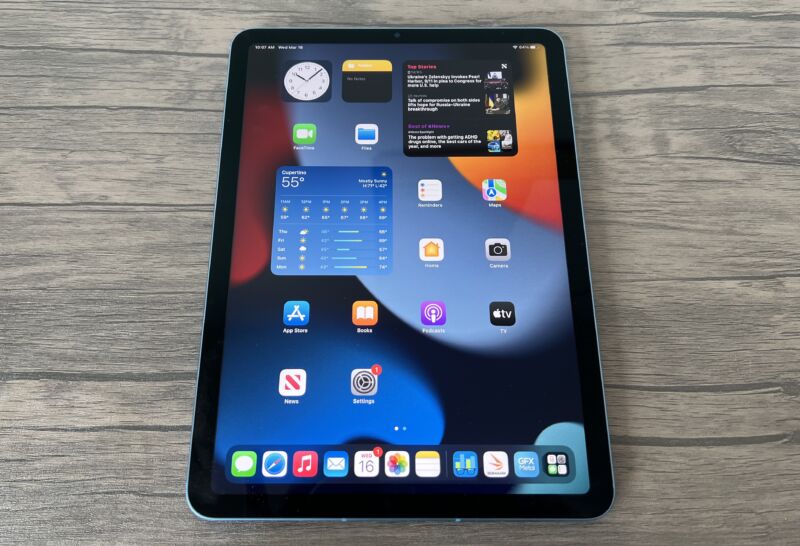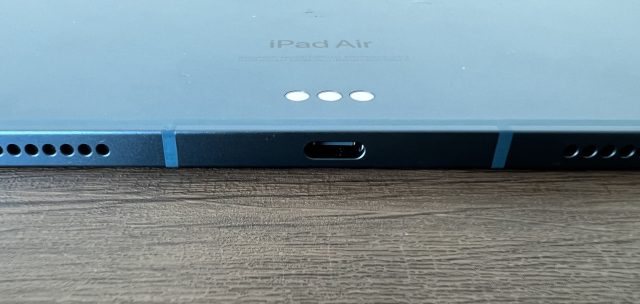
Apple's latest iPad refresh is minor on the surface, but there's a big step forward inside.
The new iPad Air refresh is mainly about two things: the M1 chip and 5G. Apart from those changes, the new tablet is very similar to its 2020 predecessor.Those two things are probably not enough to make upgrading from the 2020 model worth it, but thanks to the M1, the 2022 iPad Air is a slam dunk if you have an older iPad or another tablet and you're ready for a step up.
Specs
Let's start with what hasn't changed since the last model.
What hasn’t changed
Starting at $599, the iPad Air comes in 64GB and 256GB (for $150 more) storage configurations, and it features a 10.9-inch IPS display with a resolution of 2,360×1,640 pixels. It's a great screen, though it can't achieve the kind of contrasts or deep blacks you get from the OLED or Mini LED screens seen in other devices, like the largest iPad Pro. The refresh rate of the iPad Air still sits at 60 Hz.
The dimensions are almost exactly the same as the 2020 model, too, at 9.74×7×0.24 inches, or 247.6×178.5×6.1 mm. It weighs 1.02 lbs, or 462 g in the case of the cellular model. The Wi-Fi model is imperceptibly lighter at 461 g.
The tablet features a Touch ID fingerprint reader embedded in the top on/off button and stereo speakers in landscape mode, along with two microphones. Apple claims it gets up to 10 hours of battery life when surfing the web over Wi-Fi or during video playback.

There's a rear-facing 12 MP camera with an f/1.8 aperture, and the tablet can record 4K video at up to 60 frames per second.
In terms of wireless connectivity, the non-cellular model supports Wi-Fi 6 and Bluetooth 5.
What’s new
This is where we get to the first major difference compared to last time: the 2022 iPad Air's cellular model offers 5G connectivity. Whether this is appealing depends on where you live, of course. If you live in the heart of a major city, you'll likely see faster download speeds and lower latency in many places. If you don't, the benefits could be negligible.
Like the iPad Pro and the last iPad Air, the 2022 iPad Air has a single USB-C port instead of the Lightning port that was seen in prior iPads. This time, though, it offers twice the data-transfer speeds of 2020 iPad Air's USB-C port. That won't matter to most users since wired file transfers are not a common use case for this kind of device, but if it matters to you, it's there.

Center Stage is a nice feature on tablets mainly because it addresses some of the awkwardness of the side-aligned camera when the tablet is in landscape orientation. It works well much of the time, although it can occasionally get slightly confused or move in a distracting way beyond your control. Most of the time, though, it does exactly what it's meant to do. It's not enough on its own to justify an upgrade over another iPad, but it's a nice addition.
Lastly, the iPad Air includes Apple's M1 chip, which was previously seen in the iPad Pro, MacBook Air, 13-inch MacBook Pro, 24-inch iMac, and Mac mini. Here, it has an eight-core CPU (four performance, four efficiency), an eight-core GPU, and an eight-core NPU.
We'll talk about benchmarks in a bit, but here's a spoiler: it performs almost exactly the same as this very chip did in the iPad Pro, so there aren't any compromises here. Also, Apple has doubled the RAM from 4GB to 8GB.
reader comments
168